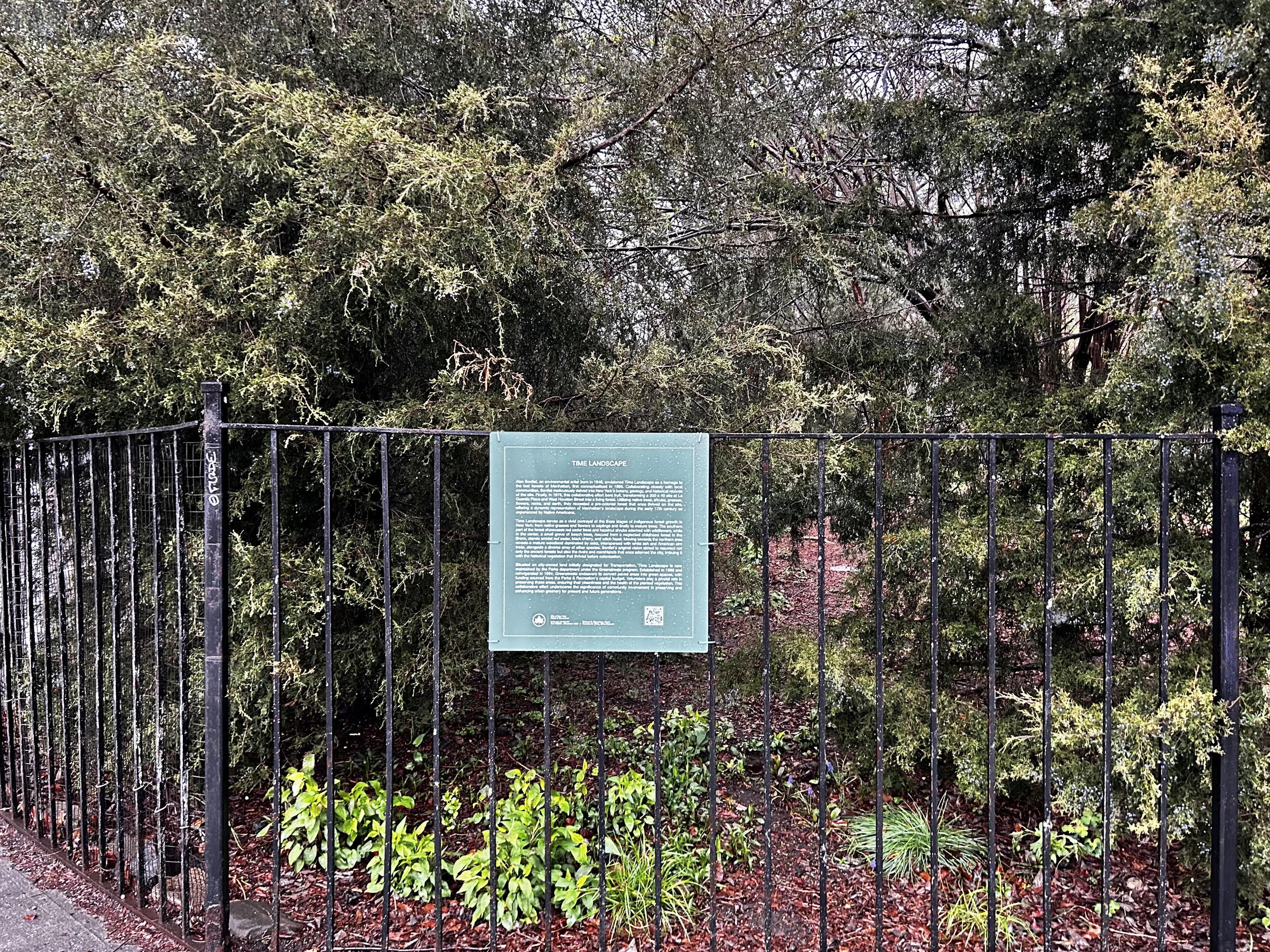Time Landscape
The ‘Time Landscape’ sustainable installation was proposed to the parks department in 1965. After several years of development and research, the project was dedicated in 1978. After extensive research on New York’s Botany, geology and history, Sonfist and local community members slowly developed indigenous forest inhabited by indigenous and precolonial people as it existed before European colonization. Greenwich Village, once know as Manhatta to the American Lenape Indian, underwent significant transformation over three-and-a-half centuries. The area, featuring sandy hills and the trout-filled Minetta Brook, became a hub for fishing and duck hunting. Amidst the urban development of Greenwich Village, Time Landscape serves as a natural landmark, offering a glimpse into the 17th-century and earlier Manhattan. The sustainable installation’s initial vision included three stages of forest growth, from grasses to saplings to mature trees. The southern part of the plot, representing the youngest stage, now showcases birch trees, beaked hazelnut shrubs, and a layer of wildflowers. Additionally, a central grove features beech trees grown from seeds and saplings transplanted from The Hemlock Forest in the Bronx. ‘Time Landscape’ is meticulously maintained by the Parks department under the Greenstreets program. Initiated in 1986 and reintroduced in 1994, Greenstreets transforms paved street properties, like triangles and malls, into green lawns. Financed through the Parks & Recreation's capital budget, Greenstreets plants trees and shrubs in barren street spaces. The collaborative effort involves volunteers who play a crucial role in keeping these areas clean and ensuring the health of the planted vegetation. In essence, ‘Time Landscape’ serves as a living historical narrative, providing city-dwellers and various forms of life the opportunity to experience the bygone natural beauty of Manhattan amidst the urban tapestry of Greenwich Village. The ‘Time Landscape’ is an indigenous forest that will continue to change and reflect the environmental conditions of the city and its population as the landscape evolves.
“My Art is about change, and as the world changes the time landscape changes as well.”
-Alan Sonfist
Time Landscape
1965-Present
45 x 200 ft.
Indigenous trees, earth, open meadow










